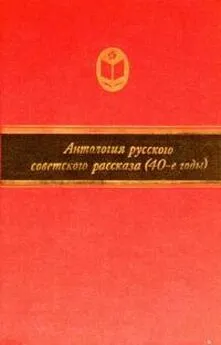Юрий Слёзкин - Эра Меркурия
- Название:Эра Меркурия
- Автор:
- Жанр:
- Издательство:Литагент Corpus
- Год:2019
- Город:Москва
- ISBN:978-5-17-109198-9
- Рейтинг:
- Избранное:Добавить в избранное
-
Отзывы:
-
Ваша оценка:
Юрий Слёзкин - Эра Меркурия краткое содержание
Эра Меркурия - читать онлайн бесплатно ознакомительный отрывок
Интервал:
Закладка:
22
Max Weinreich. History of the Yiddish Language. Chicago: University of Chicago Press, 1980, 95–124.
23
Paul Wexler. The Ashkenazic Jews: A Slavo-Turkic People in Search of a Jewish Identity. Columbus: Slavica, 1993, 59–60 and passim; Dell Hymes. Introduction , in Dell Hymes, ed. Pidginization and Creolization of Languages. Cambridge: Cambridge University Press, 1971, 76, 77–78, 86–87 (цитата взята со с. 86); см. также: Іап F. Hancock. Recovering Pidgin Genesis: Approaches and Problems , in Albert Valdman ed. Pidgin and Creole Linguistics. Bloomington: Indiana University Press, 1977, 277–294, esp. 289–290, and Ian F. Hancock, Appendix: Repertory of Pidgin and Creole Languages , там же, 385.
24
Birnbaum, Yiddish, 82 and passim; Weinreich, History of the Yiddish Language, 29, 350–351, 599f and passim; Joshua A. Fishman. Yiddish: Turning to Life. Amsterdam: John Benjamins, 1991, 19–35, 189–201.
25
О категории “смешанных языков” см.: Bakker, Michif , 25–26. Нет сомнения, что с точки зрения грамматического строя и словарного запаса идиш – германский язык; уникальными (среди германских языков) являются история его возникновения и функционирование.
26
Matras, Para-Romani Revisited , 21; Yaron Matras. The Romani Element in German Secret Languages , in Matras, The Romani Element, 193–194; Hancock, “Recovering Pidgin Genesis”, 290.
27
Weinreich, History of the Yiddish Language, 199, 605.
28
Luhrmann, The Good Parsi, 47–59.
29
Horowitz, Ethnic Groups in Conflict, 168–169.
30
Michael J. Casimir In Search of Guilt: Legends on the Origin of the Peripatetic Niche , in Rao, The Other Nomads, 373–390; Olesen, Peddling in East Afghanistan , 36; Okely, The Traveller-Gypsies, 216.
31
Lancaster and Lancaster, The Function of Peripatetics , 319.
32
Van den Berghe, The Ethnic Phenomenon, 143. См. также: Bonacich, А Theory of Middleman Minorities , 586.
33
О “корпоративном родстве” см.: William G. Davis. Social Relations in a Philippine Market: Self-Interest and Subjectivity. Berkeley and Los Angeles: University of California Press, 1973, 199–200; и Granovetter, The Economic Sociology , 143–146.
34
Sutherland, The Body , 377–378; Matt T. Salo, Gypsy Ethnicity: Implications of Native Categories and Interaction for Ethnic Classification , 78–79; Ignacy-Marck Kaminski. The Dilemma of Power: Internal and External Leadership. The Gypsy-Roma of Poland , in Rao, The Other Nomads, 332–334.
35
Bharati, The Asians in East Africa, 42, 149; van den Berghe, The Ethnic Phenomenon, 147–153.
36
Van der Laan, The Lebanese Traders, 228–230, 241–244. Цитата взята со с. 229.
37
Ivan Н. Light. Ethnie Enterprise in America: Business and Welfare among Chinese, Japanese, and Blacks. Berkeley and Los Angeles: University of California Press, 1972, 45–61, 81–100; Linda Y. C. Lim. Chinese Economic Activity in Southeast Asia: An Introductory Review ” in Lim and Gosling, The Chinese in Southeast Asia, 1: 5; Eitzen, Two Minorities , 230; Pan, Sons of the Yellow Emperor, 111–127.
38
Granovetter, The Economic Sociology , 143; see also Bonacich, A Theory of Middleman Minorities , 586–587; and van den Berghe, The Ethnic Phenomenon, 139–144.
39
Цитируется в: Albert S. Lindemann. Esau’s Tears: Modern Anti-Semitism and the Rise of the Jews. Cambridge: Cambridge University Press, 1997, 5.
40
Luhrmann, The Good Parsi, 50.
41
Berland, Kanjar Social Organization , 249; Gmelch, Groups That Don’t Want In , 314; Maurice Samuel. The World of Sholom Aleichem. New York: Alfred A. Knopf, 1943)], 131.
42
Detienne and Vernant, Cunning Intelligence, 47–48.
43
Berland, Kanjar Social Organization , 249.
44
Gmelch, Groups That Don’t Want In , 314.
45
Jacob Katz. Out of the Ghetto: The Social Background of Jewish Emancipation, 1770–1870. Cambridge: Harvard University Press, 1973, 22.
46
Сравни: Gellner, Nations and Nationalism, 103–109; Kotkin, Tribes, passim.
47
Luhrmann, The Good Parsi, 91–95, 119; Jamsheed K. Choksy, Evil, Good, and Gender: Facets of the Feminine in Zoroastrian Religious History. New York: Peter Lang, 2002, 109.
48
Dario A. Euraque. The Arab-Jewish Economic Presence in San Pedro Sula, the Industrial Capital of Honduras: Formative Years, 1880 s– 1930 s ”, in Ignacio Klich and Jeffrey Lesser, eds. Arab and Jewish Immigrants in Latin America: Images and Realities. London: Frank Cass, 1998, 95, 109; Clark S. Knowlton. The Social and Spatial Mobility of the Syrian and Lebanese Community in Sao Paulo, Brazil , in Hourani and Shehadi, The Lebanese in the World, 292–293, 302–303; David Nicholls. Lebanese of the Antilles: Haiti, Dominican Republic, Jamaica, and Trinidad , in Hourani and Shehadi, The Lebanese in the World, 339–360; Crowley, The Levantine Arabs , 139; Nancie L. Gonzalez. Dollar, Dove, and Eagle: One Hundred Years of Palestinian Migration to Honduras. Ann Arbor: University of Michigan Press, 1992, 93–100; Amy Chua. World on Fire: How Exporting Free Market Democracy Breeds Ethnic Hatred and Global Instability. New York: Doubleday, 2003, 116, 149–150.
49
David Himbara. Kenyan Capitalists, the State, and Development. Boulder, Colo.: Lynne Rienner Publishers, 1994, 45; Kotkin, Tribes , 103, 205–209, 229; Sowell, Migrations and Cultures, 310–311, 344; Chua, World on Fire, 113, 157–158.
50
Chua, World on Fire, 3, 36–37, 43, 34–35; Bambang Harymurti, Challenges of Change in Indonesia // Journal of Democracy 10, № 4 (1999): 9–10; Kotkin, Tribes , 165–200; Sowell, Migrations and Cultures, 175–176.
51
См., к примеру: Robert E. Kennedy, Jr. The Protestant Ethic and the Parsis // American Journal of Sociology 68, № 1 (July 1962): 11–20; Balwant Nevaskar. Capitalists without Capitalism: The Jains of India and the Quakers of the West. Westport, Conn: Greenwood, 1971; Peter L. Berger and Hsin-Huang Michael Hsiao, eds. In Search of an East Asian Development Mode! New Brunswick, N. J.: Transaction Books, 1988; S. Gordon Redding. Weak Organizations and Strong Linkages: Managerial Ideology and Chinese Family Business Networks , in Gary G. Hamilton, ed. Asian Business Networks. Berlin: Walter de Gruyter, 1996, 27–42; Robert N. Bellah. Tokugawa Religion: The Cultural Roots of Modern Japan; Sombart, The Jews and Modern Capitalism. New York: Free Press, 1985. Макс Вебер пытается доказать, что только христиане-протестанты могли создать современный капитализм, но при этом, очевидно, исходит из того, что, будучи созданным, капитализм находит некоторые религии (включая и приведенные в нашем списке) более подходящими, чем другие. См. его Sociology of Religion, гл. XV–XVI, и в особенности Ancient Judaism.
52
Sowell, Migrations and Cultures, 19, 375. Косвенные предположения того же рода см. в Bonacich, “A Theory of Middleman Minorities”, 588; Gonzalez, Dollar, Dove, and Eagle, 81–92; Curtin, Cross-Cultural Trade, passim.
53
См. в особенности: Wong-Siu-lun, Chinese Entrepreneurs and Business Trust ; S. Gordon Redding, Weak Organizations and Strong Linkages: Managerial Ideology and Chinese Family Business Networks ; and Gary G. Hamilton. The Organizational Foundations of Western and Chinese Commerce: A Historical and Comparative Analysis , and The Theoretical Significance of Asian Business Networks , in Gary G. Hamilton, ed. Asian Business Networks. Berlin: Walter de Gruyter, 1996, 13–26, 27–42, 43–58 and 283–298; Davis, Social Relations in a Philippine Market, 199–200; Granovetter, The Economic Sociology , 143–146; van den Berghe, The Ethnic Phenomenon, 140–143.
54
Francis Fukuyama. Trust: The Social Virtues and the Creation of Prosperity. New York: Free Press, 1995, 74, 85, 97–112.
55
Fukuyama, Там же, passim.
56
Eitzen, Two Minorities , 223; см. также: Pan, Sons of the Yellow Emperor, 31–34.
57
Nicholls, Lebanese of the Antilles , 348–349; Brenda Gayle Plummer, Race, Nationality, and Trade in the Caribbean: The Syrians in Haiti, 1903–1934 // International History Review 3, № 4 (October 1981): 517–539; Brenda Gayle Plummer. Between Privilege and Opprobrium: The Arabs and Jews in Haiti , in Klich and Lesser, Arab and Jewish Immigrants, 88–89.
58
Van der Laan, The Lebanese Traders, 4–5; Winder, The Lebanese in West Africa , 300; Anthony Reid, Entrepreneurial Minorities, Nationalism, and the State , in Chirot and Reid, Essential Outsiders, 56, 69 n. 61. См. также: Kasian Tejapira, Imagined Uncommunity: The Lookjin Middle Class and Thai Official Nationalism , in Chirot and Reid, Essential Outsiders, 75–98.
59
Van den Berghe, The Ethnic Phenomenon, 155; Bharati, The Asians in East Africa, 97–98; Seidenberg, Mercantile Adventurers, 203–204; Chua, World on Fire , 114. Амин цитируется по Los Angeles Times, August 14, 1972, процитированной в: Bonacich, A Theory of Middleman Minorities , 591.
60
Pan, Sons of the Yellow Emperor, 213–214, 215–219; Chua, World on Fire , 36, 44–45; Mary F. Somers Heidhues. Southeast Asia’s Chinese Minorities. Hawthorn, Victoria, Australia: Longman, 1974, 80–86; Garth Alexander. Silent Invasion: The Chinese in Southeast Asia. London: Macdonald, 1973, 130–143; Ben Kiernan, Kampuchea’s Ethnic Chinese under Pol Pot // Journal of Contemporary Asia 16, № 1 (1986): 18–29; Wu and Wu, Economic Development, 39–40; Eitzen, Two Minorities , 224–225; Reid, Entrepreneurial Minorities , 61; Harymurti, “] Challenges of Change , 9–10. Последняя цитата взята из: Abidin Kusno. Remembering/Forgetting the May Riots: Architecture, Violence, and the Making of Chinese Cultures in Post – 1998 Jakarta // Public Culture 15, № 1 (2003): 149.
Читать дальшеИнтервал:
Закладка:










